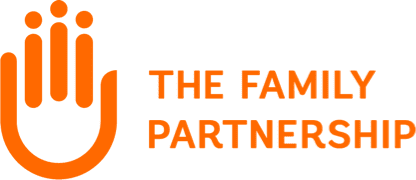3 key insights from our new series TFP Talks: The Minnesota Miracle

The Family Partnership recently kicked off a new series called “TFP Talks,” meant to provide unique, in-depth information on topics related to our mission and to strengthen our collective impact through thought, practice, and policy leadership. We called this event the “Minnesota Miracle” and focused on Minnesota’s nation-leading Spring 2023 legislative session wins for children and families, especially those living in low-income households.
We welcomed speakers Erin Bailey, Assistant Commissioner of the Children’s Cabinet, Minnesota Management and Budget, and Arthur J. Rolnick, Associate Economist at the University of Minnesota, who presented with Dianne Haulcy, President and CEO of The Family Partnership, to discuss key wins and how community members can sustain and expand impact in the months and years to come.
Read on to learn three key insights from TFP Talks: The Minnesota Miracle.
1. Minnesota’s investments in children and families yields public and private benefits
Arthur J. Rolnick has been called a “folk hero of the movement” to expand investments in early childhood education. For over thirty years Rolnick has championed the Minnesota Model for Early Childhood Education, an early childhood intervention designed for long-term impact and high public returns. The model’s basis includes supporting parents and caregivers as early as prenatal care through home-visiting nurses and mentors, as well as scholarships for parents and caregivers to select high-quality early childhood education programs.
During TFP Talks, Rolnick cited the 1962 Perry Project to provide concrete evidence of what an investment in high quality early childhood education can do.
Decades after the study began, The Perry Project showed that investments in early childhood education programs led to benefits for children and children of the children including:
- Improved school performance and workforce participation
- Crime reduction
- Improved physical and mental health.
- That these benefits are intergenerational
According to Rolnick, the most impactful investments in early childhood must start early and the programs must be high-quality. Programs must prioritize children and families facing racial and economic barriers. In addition, family home visiting programs are essential to provide support to parents and caregivers as they guide their children’s education and development.
As these children succeed, our community succeeds.
Arthur J. Rolnick,
Associate Economist at the University of Minnesota
2. Minnesota’s 2023 spring legislative session made history and national headlines
For decades, Erin Bailey has believed passionately that children and families must be centered in government and that we need make systems easier to navigate for families. According to Bailey, the 2023 legislative session did just that, delivering on the promise of the Walz-Flanagan administration to make Minnesota the best place in the U.S. to raise a family.
Bailey presented some of the wins for children and families from the 2023 legislation that passed:
- The historic Child Tax Credit which is estimated to reduce child poverty by one third and will reach 1 in 10 households
- Statewide Paid Family and Medical Leave program that will provide partial wage replacement for up to 12 weeks of leave for medical reasons, bonding, or caring for a family member
- $1.3 billion over four years to increase access to childcare and early learning
- State funding to increase childcare worker compensation
- Expanded health care coverage
- Increased funding for food access, including free school meals, funding for food shelves and food assistance
- $100 million for children’s mental health supports
- Major investment to increase funding for school counselors and social workers
- $1,300 in checks to Minnesota families, including an additional $260 per child up to three children
- $1 billion investment in housing access and affordability
These investments will directly help families experiencing the most barriers in our communities and have garnered national attention and praise. Former President Obama addressed the results of the 2023 Minnesota State Legislature saying, “These laws will make a real difference in the lives of Minnesotans.”
3. The Spring 2023 state legislative session supports generational healing for children and families in Minnesota
Dianne Haulcy is a long-time children and families advocate who has direct knowledge of how these investments will impact the lives of families in Minnesota–especially those TFP serves.
Of the individuals and families that TFP serves:
- 49% are infants up to 18 years old
- 95% live in low-income households
- 80% are black, indigenous, and people of color
Children and families who participate in TFP’s programs will be directly and significantly impacted by the programs and funding from this legislative session.
Dianne highlighted the following:
Child Tax Credit
- Est. $400 million/year
- Reduces child poverty in Minnesota by one third
- Affects approximately 36% of Minnesota households with children – 300,000 families
Childcare Accessibility
- $1.3 Billion investment
- Child Care Assistance Program (CCAP)
- Early learning scholarships
- Voluntary pre-K seats
- 34,960 additional children will access early childhood education as a result
Childcare Worker Compensation
- $358.6 Million supports early childhood workforce
- Higher ed programs
- Compensation
- Professional development
- Retention programs
- Leads to higher capacity and enrollments
- Results in greater parent/caregiver participation in the workforce
- TFP has already been able to access funds to increase compensation for staff so that wages are competitive
Housing Access and Affordability
- $1 Billion investment
- Minnesota Housing Finance Agency budget increased by 850%
- Helps to protect children from adversity
- Reduces disparities in home ownership and rates of homelessness
- Helps families to build generational wealth
Family Home Visiting
- $7.2 Million add’l investment
- Prevention-focused family home visiting with pregnant parents and families with young children in priority groups
- Home visiting has whole-family benefits:
- Helps prevent child abuse and neglect
- Supports positive parenting
- Improves maternal and child health
- Promotes child development and school readiness
- 93% of families in our home visiting programs improved parenting skills and reduced the risk of maltreatment
How our community can sustain and expand impact in the months to come
At the conclusion of our discussion, the speakers offered their thoughts on how community members can sustain this momentum and build on it to continue to support children and families in Minnesota.
The legislation passed last spring will make a tremendous difference for children and families living in poverty. However, as Haulcy mentioned, nearly all families struggle to pay for childcare—families with more than one child can pay over 50% or more of their income in childcare.
The proposal to ensure that families would not pay more than 7% on childcare did not pass in 2023, but advocacy efforts are continuing in 2024. All presenters agreed low-income families had to be prioritized but hoped middle-class families will see more relief in the future.
It can be easy to feel that your voice doesn’t matter but your advocacy, voice and stories matter.
Dianne Haulcy
Bailey noted that Minnesota will need to implement these programs and ensure that the funding reaches its targets. She said that the state plans to work with counties, tribal governments, and community organizations to guarantee success. Bailey also said that it is important to work with leaders and advocates like The Family Partnership that have a solid understanding of what families truly need. Data is important but stories are important too, because stories show how real people experience these wins. Without both, we cannot fully understand the impact of the landmark Spring 2023 legislative session in Minnesota.
To learn more about upcoming opportunities for advocacy, follow us on Facebook, LinkedIn, Instagram, and X, or sign up for our newsletter.
